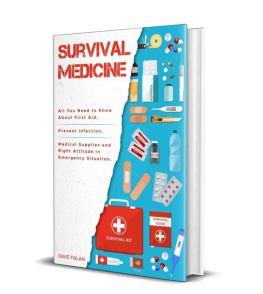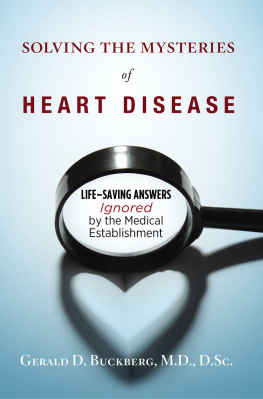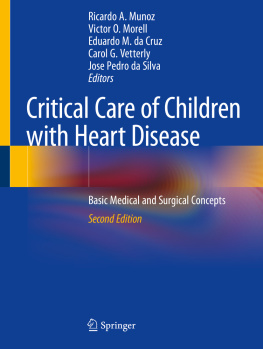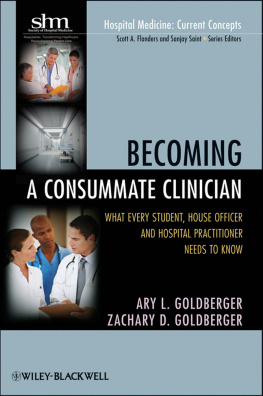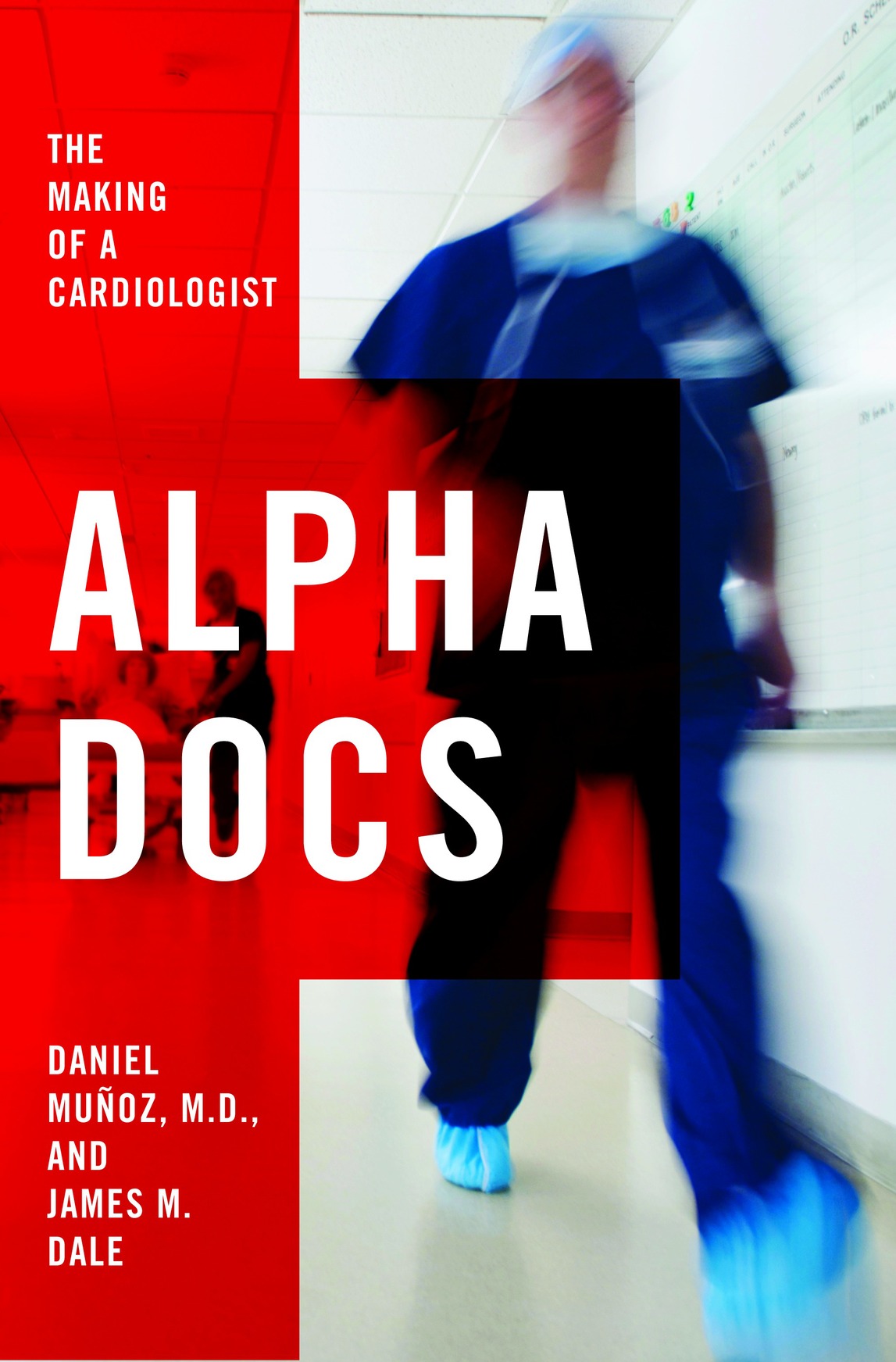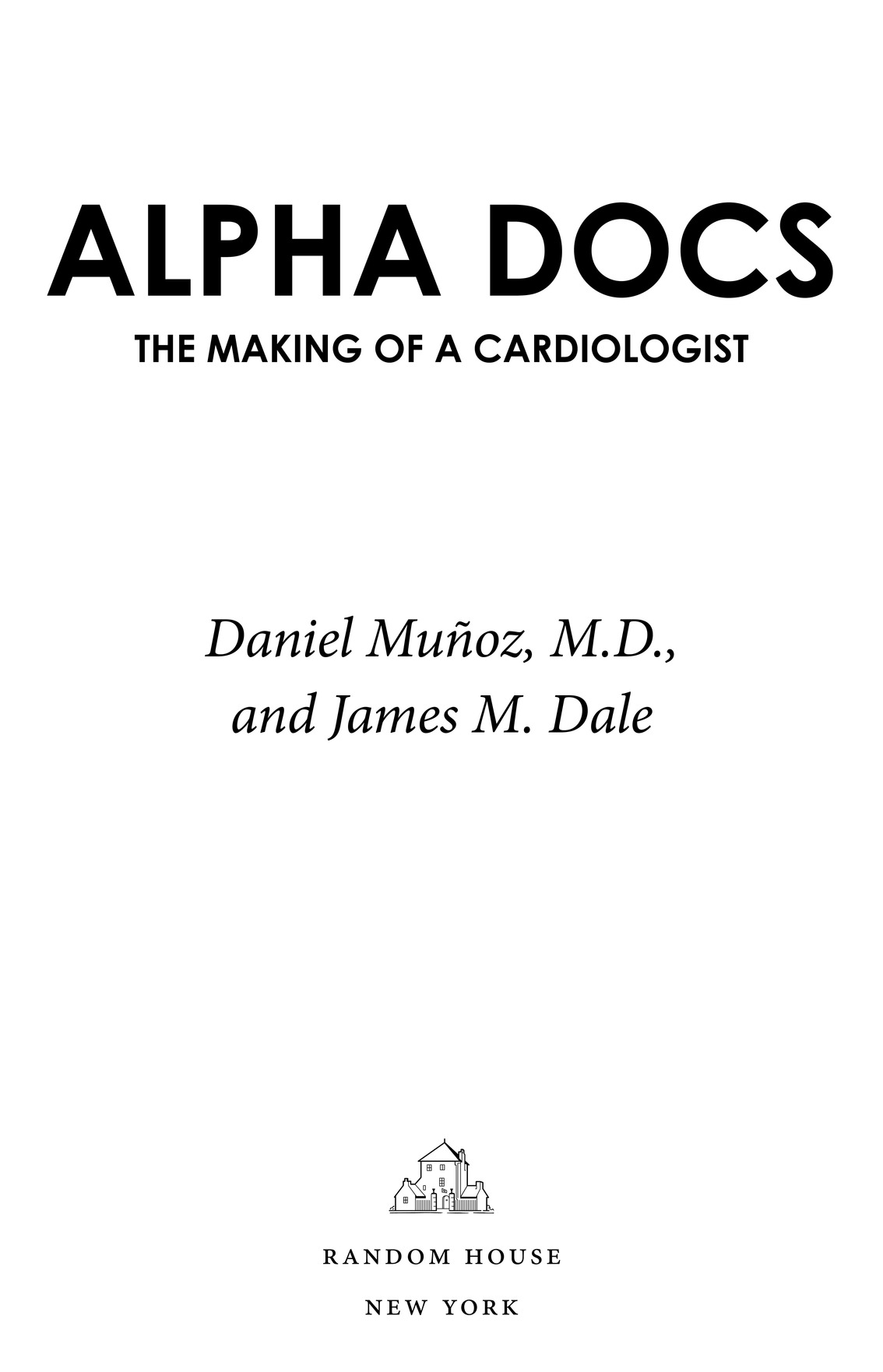The stories depicted in this book are based on, or derived from, real-world medical situations. In order to protect the privacy of patients and families, names, personal and medical details, and other identifying characteristics have been changed. The names of attending doctors have been changed to the first or middle names of U.S. presidents. Other medical personnel names and details have also been changed.
Introduction
A LIFE-CHANGING EVENT
East Baltimore in July, and the temperature and humidity are an identical, unbearable ninety-eight. It wasnt raining, but walking one block left you soaked. I walked three. That was my route within the invisible Johns Hopkins safety zone, the worlds biomed fortress, surrounded by lead-painted welfare housing and occasional crack dens. By the time I stepped into the outpatient entrance, my shirt was like a second skin. A blast of AC turns the perspiration to a chill as I enter the underground tunnel that leads to the main hospital, content to be out of the heat for the next thirty hours. Nothing about this night seems different from any of the others Ive spent as the internal medicine resident on the cardiac intensive care unit (CICU) rotationbut then, life-changing moments rarely come with advance warning.
In the CICU, the attending doctor leads the teama cardiology Fellow and a small squad of residents that includes methrough rounds, patient by patient, checking charts and meds. The attending fires questions like the lightning round of a game show; we spit back answers and then move on to the next bed. When we finish, the attending glances outside, through a window steamed with sweat, and casually says, This is the kind of weather that can kill people.
Hes right. Not far from the hospital, at 6:00 p.m., a man named Randy is walking through Patterson Park in East Baltimore. In the daytime, Patterson is still just a park, full of kids on bicycles, joggers, and softball teams. But a few hours later, darkness transforms it into an open-air drug market, where people such as Randy can buy a small packet of coke, their little nightly jolt. Out of a job and with nowhere else to be, Randy lights a cigarette and waits for night to fall.
Randy is thirty-nine, but an overweight, dissipated thirty-nine. Even the short walk from the southeast corner of the park to the crisscross at its center has exhausted him. He sits down on a splintered green bench and waits for the fatigue to go away, but it doesnt. His chest feels strangely heavy, as if something were sitting on his rib cage. Even when Randy stretches out on the bench, the unfamiliar pressure refuses to let up.
An old woman walks by, a park regular who pushes a stroller filled with empty bottles and cans, but no baby. Seeing Randy, she stops and asks, You okay? He doesnt answer. You need help? He tries to shake his head, but it wont move. The woman starts to walk away, then turns back. Want me to call an ambulance? Hearing Randys faintly whispered Yeah, the elderly lady fishes a flip phone out of her collection of bottles and cans, and dials 911.
When the EMTs find Randy on the bench, they ask him his age, name, and pain level; check his vital signs; then roll him onto a gurney and into the ambulance. After putting an oxygen mask on Randy and hooking him up to an IV, the medics phone ahead to Johns Hopkins with the data: time, 6:47 p.m.; thirty-nine-year-old male with substernal chest pain; 10 out of 10 on pain scale; nauseous; likely MI (myocardial infarction) according to the electrocardiogram (EKG) in the ambulance, eight to ten minutes from the emergency room (ER).
The call from ambulance to hospital is a trigger, alerting each of the appropriate hospital care units to be ready. Even though Randy is a heavy-smoking, obese, habitual drug user without a job, having a life-threatening emergency in the locale of East Baltimore means one thing: He is headed to Johns Hopkins, one of the top-ranked hospitals in the United States. Unlucky Randy has lucked out on this one thing.
The Hopkins ERa contradiction of rusty steam pipes and chirping digital monitorshas a bed slot ready. By the time the ambulance team bashes the swinging doors open with the gurney, another team is waiting for the handoff. An ER nurse hooks Randy up to the twelve leads (sensors) for the EKG, which will measure the rhythm and strength of his heartbeat. Another nurse draws blood to check whether elevated enzyme and protein levels are leaking into Randys bloodstream. Definitive lab results will take ninety minutesminutes that Randy doesnt have. The nurses give Randy aspirin, slip a nitroglycerin tablet under his tongue, and connect his IV to a cocktail of morphine and heparin, to help the pain and thin his blood. Meanwhile, Randy pants. He cant seem to catch his breath. The weight on his chest is relentless.
The attending emergency room doctor and his resident read the jagged lines on Randys EKG, looking for STEMI, an elevation in the ST segment of the EKG that indicates MI. Although Randys EKG is ambiguous, it is abnormal enough to kick off a series of rehearsed responses: The STEMI code is sent to the pagers carried by both the cardiac catheterization team and the cardiac intensive care unit doctors, and the EKG printout is faxed up to my team in the CICU on the fifth floor. My CICU Fellow and I each see the EKG and draw the likely conclusion: This heart tissue may be dying. This is a significant moment for me: Perhaps for the first time, I think I know what this is. And I know what to do. With no time to waste on extra conversation, he says, Lets make sure, and nods toward the portable echocardiogramthe ultrasound machine. As I roll it into the elevator, I barely have time to register the significance of my personal moment of clarity.
After navigating a service elevator and three hallways, we arrive at Randys bedside, to find his breathing even more labored. The pressure on his chest has increased from a box of bricks to a small elephant. Randy is in visible distress, and he is scared: Doc, am I having a heart attack? I look over at the CICU Fellow, who is so intent on the echo images that he doesnt seem to hear Randy. For now, all I can do is give Randy safe but impossible-to-follow advice: Try to relax.


